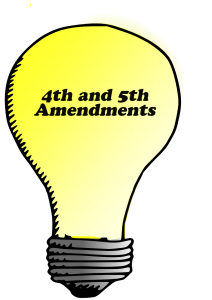My youngest son played in a youth basketball league this year, and his team’s track record was 0-10. Or maybe it was 0-12. I’m not sure about the second number, but I’m 100% positive about the first.
This was a particularly difficult experience both for him and for his parents, who had to come up with ways to buoy his spirits every time he lost – and he lost every time. Given how much my son hates to lose, his anger and frustration built exponentially throughout the season, as did his fury at those he considered to be the true villains in this scenario and the architects of his every defeat:
Those stinkin’ refs.
To hear my son tell it, all the referees were engaged in a grand conspiracy against his team, rigging every game to ensure a victory for the other guy. I can’t really blame him. They were an easy scapegoat, and they provided the only way to work around the fact that our team was just deeply and fundamentally lousy.
Still, picking on refs is a national pastime. Refs get cheered when the call benefits the home team and booed when it does not. Hardcore fans rarely, if ever, give a ref credit for a good call that hurts their team. Even so, it’s the referee’s duty to try to be as objective as possible and show no favoritism to one side or the other. A ref is there to make sure everyone’s playing by the rules, not to help one side or the other to win.
What I’ve outlined above, in crude terms, is the way I view the judicial branch of government.
The ideological battle in Washington has calcified into one team versus another. (I wish that were not the case, but that’s another discussion.) I believe that the nine justices of the Supreme Court ought to function not as as players on either ideological team, but as the referees. And a good justice should be willing to uphold laws they personally dislike as long as they abide by the constitutional rules of the game.
As Justice Kennedy retires, the apoplexy on the left demonstrates that this is not how the majority of people see the role of the High Court. Most view it as a sort of above-the-fray superlegislature, where smarter people than the hoi polloi can save us from our own idiotic laws. This is the case not just with leftists, who want the Court to override any legislative attempt to change abortion laws, but with those on the Right who were disappointed that the Court didn’t nullify Obamacare. Everyone wants the ref to make calls that help their team win.
From my perspective, the policy outcome of a judicial decision is largely irrelevant. It is not the Court’s responsibility to make sure the laws do what the justices personally want; it is the Court’s responsibility to call fouls when the laws go out of constitutional bounds.
The late and much-missed Justice Antonin Scalia summarized his philosophy this way in an interview with nymag.com:
[I]f a state enacted a law permitting flogging, it is immensely stupid, but it is not unconstitutional. A lot of stuff that’s stupid is not unconstitutional. I gave a talk once where I said they ought to pass out to all federal judges a stamp, and the stamp says—Whack! [Pounds his fist.]—STUPID BUT CONSTITUTIONAL. Whack! [Pounds again.] STUPID BUT CONSTITUTIONAL! Whack! STUPID BUT CONSTITUTIONAL … [Laughs.] And then somebody sent me one.
Scalia has a reputation for being a right-wing firebrand, but to his immense credit, he repeatedly upheld laws that he personally believed were stupid and constitutional, the most prominent being his opinion upholding the right to burn the US flag as a form of protest.
“If I were king,” he once said, “I would not allow people to go about burning the American flag. However, we have a First Amendment, which says that the right of free speech shall not be abridged. … Burning the flag is a form of expression. Speech doesn’t just mean written words or oral words. … Burning a flag is a symbol that expresses an idea.”
In other words, Scalia thought flag burning was “stupid but constitutional,” and, as the ref, made the right call.
This will often result in painful losses for both teams, but the alternative to this approach, in my mind, is much worse. It’s a nine-person oligarchy with lifetime appointments making laws with no accountability. Essentially, it’s a system rigged by refs who get to pick the winners and losers of every game.
This, incidentally, is the main reason I want to see Roe v. Wade overturned. It is not because I’m particularly eager to make abortion illegal, but because that decision is the worst modern precedent of judicial referees making a call solely to benefit their favorite team.
Roe v. Wade decided that there is a constitutional right for a woman to have an abortion in the first two trimesters of her pregnancy. The problem is that the Constitution says nothing whatsoever about abortion, let alone which trimesters are sacrosanct. In order to manufacture a constitutional right to abortion, the justices came up with a bizarre legal rationale that defies any semblance of common sense.
As I understand it, the analogy is one of a lightbulb, pictured below:
(I apologize for not using a more eco-friendly bulb. These are easier to edit in Photoshop.)
This bulb represents rights clearly delineated in the Constitution, like so:
This may be only partially accurate, but the 1965 Griswold v. Connecticut decision established a “right to marital privacy” ensuring the ability to legally obtain contraception. The majority opinion in that case references Amendment 4 protections against unreasonable search and seizure and Amendment 5 protections against self-incrimination, so, while there may be other rights in other precedents, these are the ones I’m putting in my lightbulb.
Anyway, here’s your handy-dandy Constitutional Right lightbulb, which throws off “emanations,” or rays of light, like so:

It just so happens that those emanations constitute rights in and of themselves. One of those rights, it seems, is the Right to Privacy, like so:
 Not sure what rights the other emanations are. Given that a lightbulb throws off innumerable emanations, it’s best not to place any heavy objects on this particular analogy, as it’s likely to collapse, even though it was thought up by people far smarter than you are.
Not sure what rights the other emanations are. Given that a lightbulb throws off innumerable emanations, it’s best not to place any heavy objects on this particular analogy, as it’s likely to collapse, even though it was thought up by people far smarter than you are.
Now it turns out that the Right to an Abortion is not, like the Right to Privacy, a direct emanation from the lightbulb. (That would be too easy, apparently.) No, the Right to an Abortion can only be found in the “penumbra” of the emanation.
What’s a penumbra, you ask? Google tells me it’s “the partially shaded outer region of the shadow cast by an opaque object.” Now I’m not sure how an emanation is an opaque object – this analogy really doesn’t hold water – but the penumbra can be defined as sort of the fuzzy edges of the light as it starts to fade. Or, if you will, the shadowy emanations of the emanations. In any case, with our drawing, if you zoom in, you can find the penumbra’s soft, gentle glow, like so:
And there, if you look hard enough, you can see the constitutional Right to an Abortion, clear as day, hidden in the penumbra of the emanation of the Right to Privacy.

Of course, it’s only a right to an abortion in the first two trimesters and a whole host of technical issues that the Constitution never dreamed of mentioning but which are clear enough if you analyze the emanations of the penumbras and the penumbras of the subsequent emanations down to the microscopic level and anyway this is the outcome we wanted so shut up.
So let’s take a step back and look at the whole picture, with the irrefutable constitutional Right to an Abortion in trimesters 1 and 2 highlighted by the red arrow seen below.
Hopefully, that looks as silly to you as it does to me. Even if it doesn’t, it should scare you into imagining what a judge from the other team could find in any number of emanations or penumbras. What’s to prevent a judge with Trump-like prejudice from finding a new right to shut down critical news outlets, beat up immigrants, or deport all Muslims in some other convoluted emanation and penumbra scenario?
Roe v. Wade is essentially the refs calling the abortion game before it begins.
Most abortion rights supporters have never considered the convoluted legal reasoning behind Roe, but even those that have generally don’t care. This is the policy outcome they wanted, so who cares if the refs had to cheat to get it? But there are plenty of examples of the Court producing truly terrible outcomes when they decide to become players instead of refs. Dred Scott. Forced sterilization. Japanese internment camps. Separate but equal. Yes, unprincipled refs with unlimited power can get you what you want, but they can do an awful lot of damage, too.
Notice, too, that I’ve said nothing about my own personal position about abortion. I’m merely saying that if you want a constitutional right to an abortion, you should have to amend the Constitution to get it. Of course, amending the Constitution was deliberately designed to be a difficult process, requiring a supermajority in Congress and the approval of 3/4 of state legislatures. It’s much, much easier to find justices who manufacture rights out of the ether to subvert that process with a literal handful of votes. They do so in the name of a “living Constitution” that can ignore the plain language of the document and be twisted and tortured into meaning whatever a majority on the Court wants it to mean.
“Saying that the Constitution is a living document is the same as saying we don’t have a Constitution,” said economist Walter Williams. “For rules to mean anything, they must be fixed. How many people would like to play me poker and have the rules be ‘living’? Depending on ‘evolving standards,’ maybe my two pair could beat your flush.”
Likewise, my son would have liked “living” rules in all the basketball games he lost, but that would have been far worse in the long run. Whether on the basketball court or the Supreme Court, when the refs cheat, everybody loses.
At least, that’s how I see it. Where do you stand? Join a camp below and let your voice be heard!




